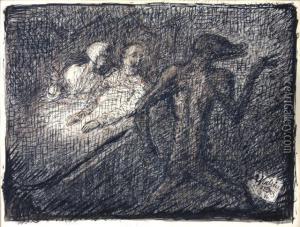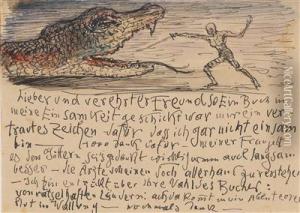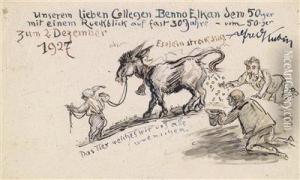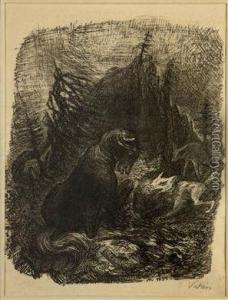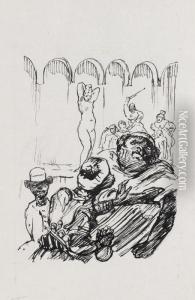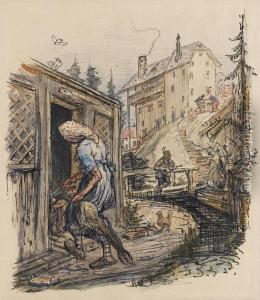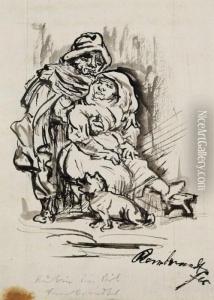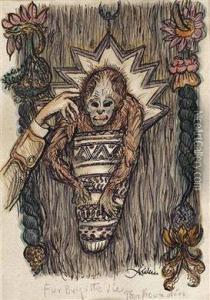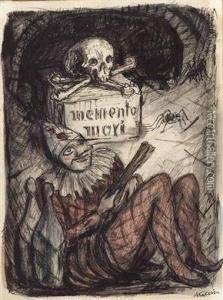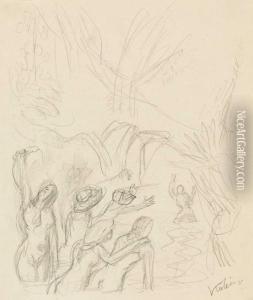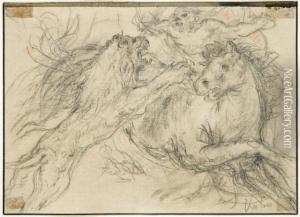Alfred Kubin Paintings
Alfred Leopold Isidor Kubin was an Austrian printmaker, illustrator, and occasional writer, widely recognized for his dark, fantastical works. Born on April 10, 1877, in Litoměřice, then in Bohemia (now the Czech Republic), Kubin had a turbulent childhood marked by tragedy, including the loss of his mother when he was quite young and the suicide of his father when he was an adolescent. These early experiences of death and grief would greatly influence his later work, which often explored themes of death, decay, and the macabre.
Kubin started his artistic training at the age of 19 when he moved to Munich, which was then a vibrant artistic hub. Despite initially studying photography, he quickly turned to graphic arts, studying at the private school of Ludwig Schmid-Reutte and later at the Munich Academy with Nikolaus Gysis. However, Kubin found the academy's approach restrictive and left to pursue a more self-directed education. He was largely self-taught as an artist, developing a unique style that blended influences from Symbolism, Art Nouveau, and Expressionism.
His career began to take off in the early 20th century as he produced illustrations for various German publishers. Kubin's illustrations often featured fantastical creatures and dream-like scenarios, rendered with a fine line that belied the often disturbing nature of the images. He drew inspiration from artists like Francisco Goya and James Ensor, as well as contemporary movements such as the Vienna Secession.
Kubin's most famous written and illustrated work is 'Die Andere Seite' (The Other Side), a novel published in 1909 that describes a dream kingdom and reflects his interest in the subconscious and the bizarre. This book was a seminal work of fantastic literature and is often cited alongside the works of Kafka and Meyrink.
As a member of the Blaue Reiter (Blue Rider) group, Kubin was associated with important figures in the Expressionist movement, including Wassily Kandinsky and Franz Marc, though his work remained distinctively darker than that of his contemporaries.
Throughout his life, Kubin continued to produce drawings, prints, and occasional writings. He survived the tumultuous periods of both World Wars in Europe, and his later work often reflected a more introspective and philosophical approach to the themes he had always explored.
Alfred Kubin passed away on August 20, 1959, in Zwickledt, Austria, where he had lived and worked since 1906. His legacy is that of a master of the uncanny and the grotesque, whose work continues to inspire and unsettle new generations of artists and audiences.
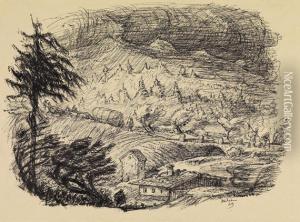
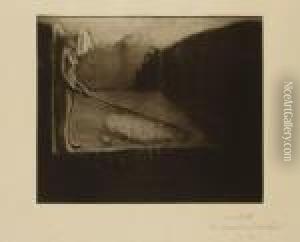
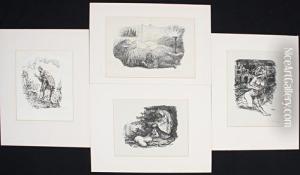
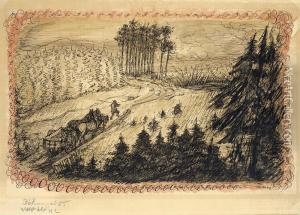
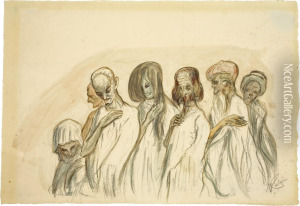
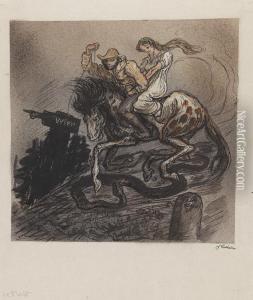
![Leda Und Der Schwan [leda Et Le Cygne]](https://www.niceartgallery.com/pic/b26916d4/2421754s.jpg)
